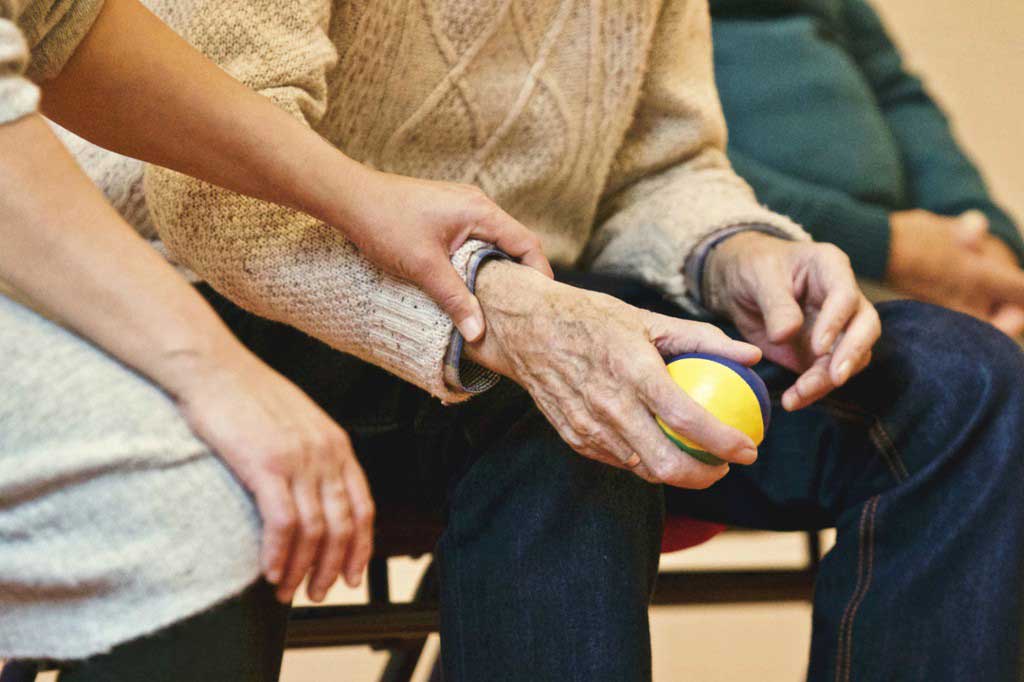Effects of HRT on sleep and sex
Older people
News article about a trial looking at women's quality of life using hormone replacement therapy (HRT)
“Benefits of HRT justify a rethink” is the headline in The Times . A recent study of hormone replacement therapy (HRT) has shown that women “showed significantly fewer hot flushes, night sweats, aching joints and muscles, insomnia and vaginal dryness than those given a placebo”, the newspaper says. The researchers suggest that current guideline advice based on other research showing that HRT could increase the risk of serious diseases including breast cancer, coronary heart disease and blood clots in selected women should be “revisited”.
The study is reliable but the results show no overall improvements in quality of life or depression. The results illustrate the difficulty in balancing short-term symptomatic benefits with long-term possible harms. Experts are quoted in the newspapers offering advice that these treatments should be individualised for women based on factors such as the number of years since menopause, medical history and chosen regimen, or the type of HRT.
Where did the story come from?
Dr Amanda Welton and colleagues who were part of the Women’s International Study of Long Duration Oestrogen after the Menopause (WISDOM) trial team, carried out this research. The study was mainly based at the Medical Research Council (MRC) general Practice Research Framework in London but also included researchers and funding from New Zealand and Australia. It was published in the peer-reviewed medical journal: British Medical Journal .
What kind of scientific study was this?
This was a randomised, placebo-controlled, double blind trial that aimed to assess the effect of HRT on health related quality of life (HRQoL). HRQoL is an outcome used in various types of research that measures the patient’s perceptions of physical and psychological health, and how the patient feels or functions; usually interpreted from answers to standard questionnaires.
The researchers recruited 3,721 postmenopausal women aged 50–69 from general practices in the UK, Australia and New Zealand. Women were only included in the trial if they had an intact uterus or had had a subtotal hysterectomy. They were then randomly assigned to either the active group or to the placebo group. The active group received a daily combined HRT pill that contained both oestrogen (conjugated equine oestrogen 0.625 mg daily) and progesterone (oral medroxyprogesterone acetate 2.5/5.0 mg daily).
The trial was designed to run for 10 years from 1999 with scheduled visits at four weeks, 14 weeks, 27 weeks, 40 weeks and 52 weeks. The women were then to have had checks every year after the first year, however the trial was stopped early in October 2002. This decision followed the publication of evidence from the Women’s Health Initiative (WHI) trial in June 2002, which found that, after 5.6 years, rates of breast cancer, heart attacks, strokes and blood clots were higher, and the rates of fracture and colorectal cancer were lower in women taking combined HRT compared with women taking placebo pills.
It was therefore only possible to collect the health related quality of life data for the WISDOM trial at the 52-week visit. However, about a third of the women who had been recruited up to the point the trial closed had been in the trial less than 40 weeks. These women and those who died or who did not attend the one-year follow-up were excluded from the analyses. This meant that data on only 2,130 (57%) of the original 3,721 women could be analysed.
A variety of questionnaires were used to assess quality of life and symptoms, including a five-item self esteem scale and the Women’s Health Questionnaire, which uses questions to capture eight components of women’s health. The areas of questioning include: depressed mood, physical symptoms, memory and concentration, vasomotor symptoms, anxiety or fears, sexual functioning, sleep problems and menstrual symptoms. Each was rated on a four-point scale: “yes, definitely” (1), “yes, sometimes” (2), “no, not much” (3) and “no, not at all” (4). The score was then summarised into two categories; definitely and sometimes were coded 0 and not much and not at all were coded 1. The higher the score, the better the quality of life in that area.
Another 28-item questionnaire was used to assess menopausal symptoms and the 20-item Center for Epidemiologic Studies depression scale was used to measure the presence and severity of depression in the population. The European Quality of Life Instrument (EuroQoL) has been validated as a measure of overall or ‘global’ quality of life and this was also used in this study. The sliding scale and index in this tool is used to determine a score where 1 corresponds to the highest possible degree of health and 0 is compatible with a level equivalent to death.
What were the results of the study?
The researchers report that after one year, small but significant improvements were observed in three of nine components of the Women’s Health Questionnaire for those taking combined HRT compared with those taking placebo. These improvements were in the areas of vasomotor symptoms such as flushing, sexual functioning and sleep problems.
Using the condition-specific questionnaire, significantly fewer women in the combined HRT group reported hot flushes, night sweats, aching joints and muscles, insomnia and vaginal dryness than in the placebo group, but greater proportions reported breast tenderness or vaginal discharge.
Hot flushes were experienced in the combined HRT and placebo groups by 30% and 29% of women, respectively at trial entry and 9% and 25% at one year, respectively.
No significant differences in other menopausal symptoms, depression, or the overall global quality of life score were observed at one year.
What interpretations did the researchers draw from these results?
Combined HRT started many years after the menopause can improve health related quality of life.
What does the NHS Knowledge Service make of this study?
The results of this study can only be interpreted for those groups of women who were included in the trial; they had all started taking a particular form of combined HRT many years after menopause. Therefore, conclusions should not be necessarily extrapolated to other age groups or types of HRT.
The beneficial changes in sleep and sexual functioning were independent of the presence of baseline vasomotor symptoms (flushes or night sweats), which suggests that it was not the vasomotor symptoms that were causing lack of sleep or sexual dysfunction in the first place.
There are differences between the results from the global/generic quality of life measures and the condition-specific questionnaires and it is worth considering the different results and implications of this:
- The researchers explain that the condition-specific questionnaires might be more sensitive to menopausal changes influencing quality of life than the generic questionnaires. They suggest that this might be why there was no significant change in the generic measures when there were significant improvements in scores that related to sleep and vasomotor symptoms in the condition-specific questionnaires. The condition-specific scores also suggested fewer aching joints and muscles, less vaginal dryness and improved sexual functioning. However if these improvements did not affect the overall quality of life as reported by the participants it is possible that the changes, while noticeable, were not important enough to affect the women in a serious way.
- Other limitations to the study include the high (36%) loss to follow-up and considerable discontinuation of study medication, particularly in the combined HRT group. As the authors acknowledge, this is a weakness to the analysis that might have introduced selection bias or inaccuracy in the results. This was largely the result of the fact that the trial had to close before it had run the full planned course.
The implications of the findings are discussed by the researchers. They suggest that specific symptomatic gains at one year of HRT can now be factored in to a woman’s choice to use combined HRT. They say “this benefit must be weighed against the overall short- and long-term risks, which must be individualised for women based on years since menopause, medical history, and chosen regimen.”






 Subscribe
Subscribe Ask the doctor
Ask the doctor Rate this article
Rate this article Find products
Find products








